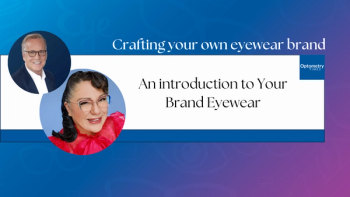
Gas permeable contact lenses-special or not?
When we discuss specialty lenses, most doctors think of multifocal or toric soft lenses. The overwhelming market share of contact lens fits are in soft lenses. However, there is a resurgence of use of gas permeable materials. This has been led by the introduction of scleral and semi-scleral gas permeable lenses.
To continue on our theme of specialty contact lenses, I addressed soft lenses in my past article (
Training with gas permeable lenses
I need to teach almost all my externs how to use a radiuscope. Our rotation is a tertiary care site and is not their primary contact lens site. Many have come from their contact lens site where they tell me they never had much opportunity to see gas permeable lenses being used. I am saddened by this lack of experience our future doctors are receiving. I understand that there is a limited amount of GP usage in school clinics, but I feel strongly there should be more time spent in this vital area for the future of the public.
I find in my travels around the country that there is also a relatively small number of practitioners comfortable in using most gas permeable modalities. When I ask my audiences how many are using these lenses, there are too few hands going up. The advent of the wide range of specialty soft lenses and their excellent optics and comfort has supplanted gas perms in many offices. Also the use of hybrids, which many doctors are more comfortable using than GPs, has supplanted traditional GP fits.
Intraprofessional referrals
One may ask if this is really so bad? It may actually be in our patients’ best interest if they are going to those doctors using a large number of gas permeable lenses with lots of expertise. Many doctors have developed a subspecialty practice in gas permeable lenses and are truly experts. Similar to vision therapy, many doctors do not offer this service and will refer to those who are experts in this area. This may help those patients who would benefit from the advantages that a GP lens would offer. It would be nice to see optometry be more willing to utilize intraprofessional referrals. We are quick to send patients to ophthalmologists but infrequently to our local optometrists who have equipment and expertise we may not.
Patients who benefit from GP lenses
Which patients may benefit from use of gas permeable materials? First, there are still many patients who are very happy in their current GP lenses. Unless there are comfort or health concerns, I see no reason to switch these patients to soft lenses. Gas permeable patients like the ease of handling and care of their lenses. When they are comfortable and fit properly, these are very healthy lenses to wear.
Patients with irregular corneal disorders such as Salzmann’s, ectasia, and other dystrophies are good candidates for gas permeable lenses. Because of the excellent optics of GP lenses, patients with high amounts of astigmatism often do best with rigid designs. The same thing is true for multifocal patients.
The advantage of gas permeable lenses is the ability to design a very wide amount of specifications to truly customize the lens-to-cornea relationship. For highly toric patients, we can design bitoric lenses with wide varieties of diameters.
For our multifocal patients, we can design lenses with a central aspheric near zone or a central distance zone. We can design a true bifocal design, which will translate. Today, we can even order a scleral multifocal. Scleral and semi-scleral designs have changed how we fit irregular corneas today. More and more, we are switching our patients to these designs.
Now, we fit patients with advanced keratoconus who thought they were heading for corneal transplant into new designs that offer great comfort and vision. We have found the initial comfort of the large diameter lenses to be superior to the traditional gas perms. For those who are initially diagnosed with keratoconus, these designs have made it easier to transition to rigid lenses without fear and trepidation. The vision has been improved and corneal health has been excellent.
There are many sources available for practitioners to learn about these lenses, including the Global Specialty Lens Symposium.
Gas permeable lenses are truly a specialty product that will make a life-changing difference for many patients. It is our obligation as optometrists to either become proficient in utilizing these devices or refer to a colleague who is.
Reference
1. The Global Keratoconus Foundation. Introduction. Available at
Newsletter
Want more insights like this? Subscribe to Optometry Times and get clinical pearls and practice tips delivered straight to your inbox.



















































.png)


